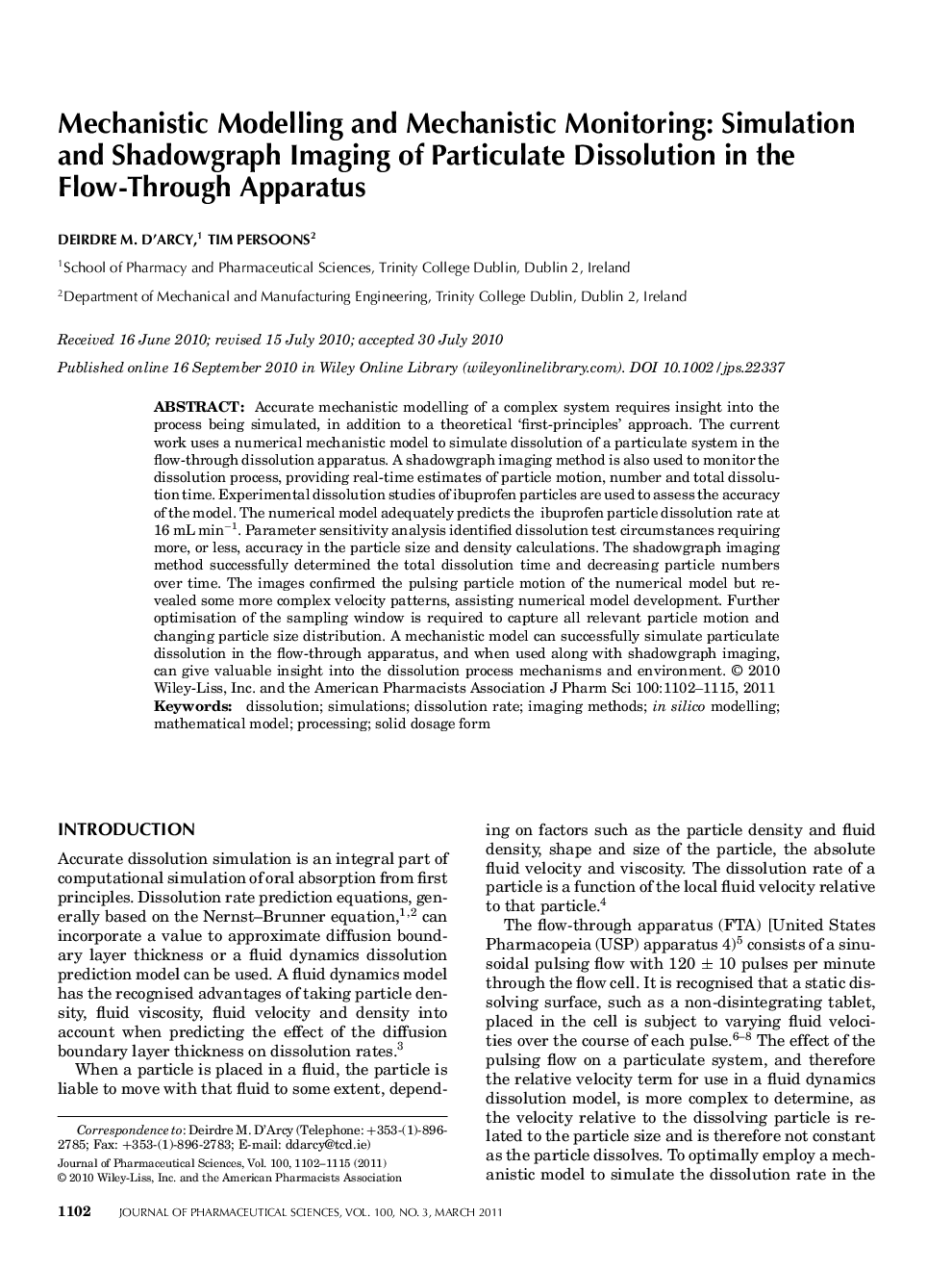| Article ID | Journal | Published Year | Pages | File Type |
|---|---|---|---|---|
| 2485824 | Journal of Pharmaceutical Sciences | 2011 | 14 Pages |
Abstract
Accurate mechanistic modelling of a complex system requires insight into the process being simulated, in addition to a theoretical 'first-principles' approach. The current work uses a numerical mechanistic model to simulate dissolution of a particulate system in the flow-through dissolution apparatus. A shadowgraph imaging method is also used to monitor the dissolution process, providing real-time estimates of particle motion, number and total dissolution time. Experimental dissolution studies of ibuprofen particles are used to assess the accuracy of the model. The numerical model adequately predicts the ibuprofen particle dissolution rate at 16Â mL minâ1. Parameter sensitivity analysis identified dissolution test circumstances requiring more, or less, accuracy in the particle size and density calculations. The shadowgraph imaging method successfully determined the total dissolution time and decreasing particle numbers over time. The images confirmed the pulsing particle motion of the numerical model but revealed some more complex velocity patterns, assisting numerical model development. Further optimisation of the sampling window is required to capture all relevant particle motion and changing particle size distribution. A mechanistic model can successfully simulate particulate dissolution in the flow-through apparatus, and when used along with shadowgraph imaging, can give valuable insight into the dissolution process mechanisms and environment.
Keywords
Related Topics
Health Sciences
Pharmacology, Toxicology and Pharmaceutical Science
Drug Discovery
Authors
Deirdre M. D'Arcy, Tim Persoons,
